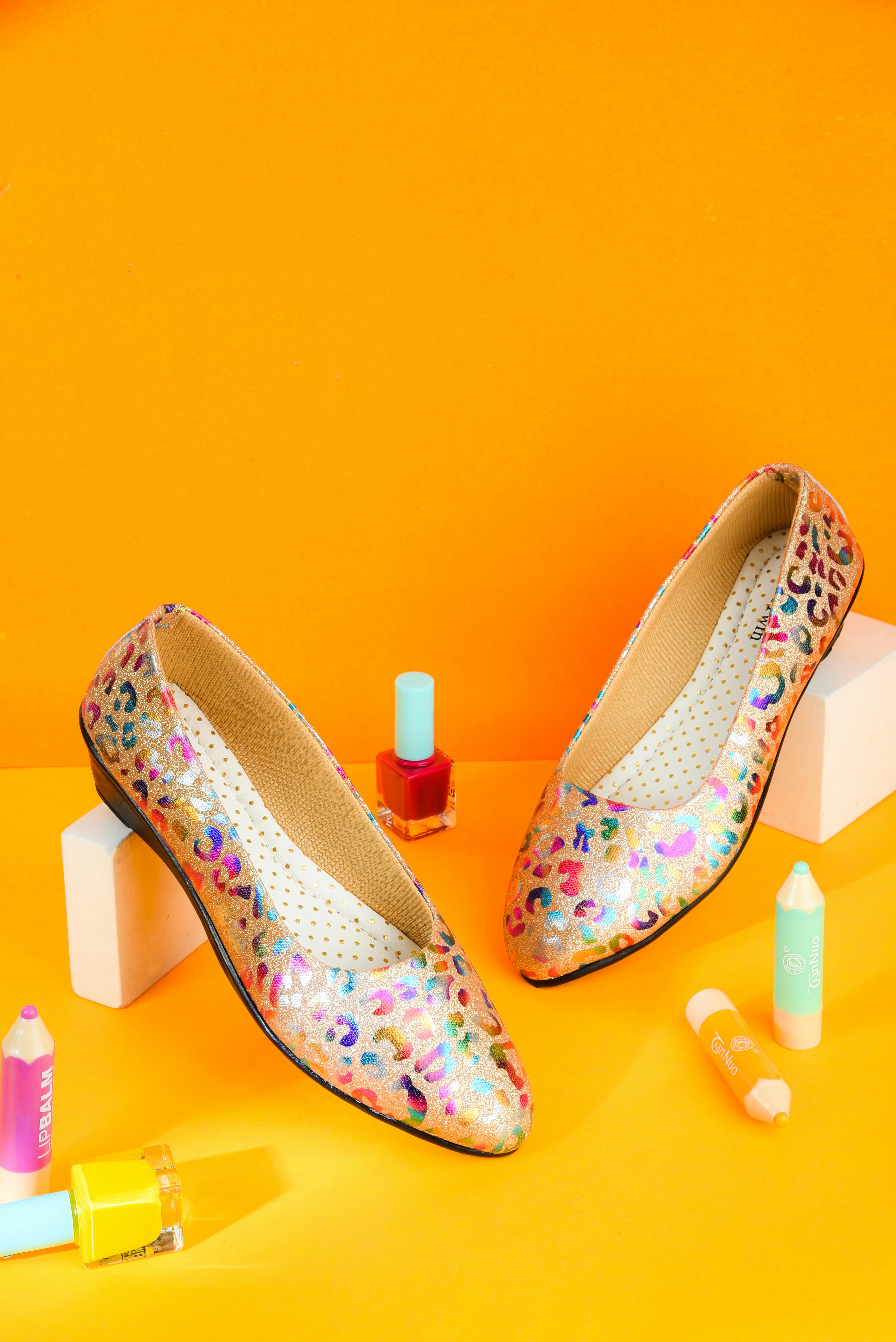I’ve always been captivated by the intricate patterns and designs found in textile art. So when I stumbled upon a research article titled “Exploring Innovative Pattern Creation Techniques In Textile Art: A Research Deep Dive,” my curiosity was instantly piqued. The article promises to take a closer look at the fascinating world of pattern creation in textile art, uncovering innovative techniques that push the boundaries of creativity. As someone with a deep appreciation for both art and research, I can’t wait to delve into this exploration and discover the hidden gems within the realm of textile art.

Historical Context of Pattern Creation in Textile Art
Throughout history, the creation of patterns in textile art has evolved from traditional to contemporary designs. Different cultures and their heritage have greatly influenced the patterns used in textiles. Technological advancements have also had a significant impact on pattern creation.
Evolution from traditional to contemporary pattern designs
In ancient times, textile patterns were often created using labor-intensive techniques such as weaving, embroidery, and block printing. These traditional methods resulted in intricate and beautiful designs that reflected the culture and heritage of the people creating them. As time went on, new technologies emerged, allowing for more complex and innovative patterns to be created.
Influence of cultural heritage on patterns
Cultural heritage plays a vital role in the creation of textile patterns. The patterns used in different cultures often reflect their history, beliefs, and traditions. For example, in some cultures, geometric patterns are commonly used, representing order and balance. In others, floral motifs may be prevalent, symbolizing nature and growth. The cultural significance of these patterns adds depth and meaning to textile art.
Technological advancements impacting pattern creation
The development of new technologies has revolutionized the way patterns are created in textile art. Digital printing technologies have made it possible to reproduce intricate patterns with precision and speed. Laser cutting and etching techniques allow for intricate and detailed designs to be applied to fabrics. The advent of 3D printing has opened up a whole new realm of possibilities, enabling artists to create three-dimensional patterns. Additionally, biotechnology has recently been used in pattern creation, incorporating living organisms into fabric to create dynamic and unique designs.
Understanding Textile Art and Its Importance
Textile art encompasses a wide range of techniques and materials used to create artistic pieces. It is a form of expression that combines traditional craftsmanship with contemporary design principles. Patterns play a crucial role in textile design, adding visual interest and enhancing the overall aesthetic appeal of a piece.
Definition and scope of textile art
Textile art refers to the creation of artworks using textiles as the primary medium. This can include techniques such as weaving, embroidery, knitting, felting, and more. Artists working in textile art often explore various themes, such as identity, culture, and social issues, through their creations. The scope of textile art is vast, with artists constantly pushing boundaries and experimenting with new materials and techniques.
Textile art in contemporary practice
In contemporary practice, textile art has expanded beyond traditional applications such as clothing and household items. Artists now create textile artworks that are exhibited in galleries and museums, elevating the medium to the status of fine art. Textile installations, sculptures, and even interactive artworks are becoming increasingly common, showcasing the versatility and creativity of textile art.
Significance of patterns in textile design
Patterns are vital elements in textile design, as they contribute to the overall visual impact of a piece. They can be used to create a sense of rhythm, balance, or movement, depending on the desired effect. Patterns also allow artists to experiment with color, texture, and composition, adding depth and complexity to their work. Furthermore, patterns in textile art often have cultural or symbolic meanings, conveying narratives or emotions that resonate with viewers.

Innovative Techniques in Pattern Creation
In recent years, several innovative techniques have emerged in pattern creation for textile art. These techniques leverage advancements in technology to push the boundaries of traditional textile craftsmanship.
Digital printing technologies
Digital printing has revolutionized the textile industry by allowing artists to reproduce intricate patterns with precision and efficiency. With the advancement of digital printing machines, artists can create high-resolution designs on various fabrics, giving them the freedom to experiment with complex motifs and color combinations. This technique has also made it possible to achieve seamless patterns, where motifs are repeated in a continuous flow.
Laser cutting and etching for textile design
Laser cutting and etching techniques have opened up new possibilities for creating detailed and intricate patterns on textiles. By using laser technology, artists can precisely cut or etch designs onto fabric, resulting in precise and intricate patterns that would be difficult to achieve by hand. This technique allows for greater precision and control, enabling artists to explore more complex and elaborate designs.
3D printing applications in textile patterns
The emergence of 3D printing has brought a new dimension to pattern creation in textile art. Artists can now design and print three-dimensional patterns, adding texture and depth to their artworks. This technique allows for the creation of intricate and unique patterns that were previously impossible to achieve using traditional methods. Artists can experiment with different materials and textures, pushing the boundaries of traditional textile art.
Use of biotechnology in creating patterns
Biotechnology has recently been employed in pattern creation, blurring the lines between art and science. This innovative technique involves incorporating living organisms, such as bacteria or algae, into fabrics to create dynamic and evolving patterns. By manipulating the conditions in which these organisms grow, artists can create living patterns that respond to environmental factors and change over time. This intersection of biology and textile art opens up exciting possibilities for creating interactive and environmentally-conscious patterns.
The Role of Software in Pattern Design
Software plays a crucial role in the creation of patterns in textile design. From computer-aided design tools to custom software developed specifically for textile artists, technology has significantly enhanced the workflow and capabilities of pattern creation.
Computer-aided design (CAD) in textile patterns
Computer-aided design (CAD) tools have become integral to the pattern design process. These software programs allow artists to create and manipulate patterns digitally, providing a platform for experimentation and refinement. CAD tools offer features such as pattern drafting, color selection, and seamless pattern creation, enabling artists to bring their creative visions to life more efficiently.
Software for simulating textile behavior and appearance
Simulation software has become an essential tool for textile artists. These programs allow artists to visualize how different patterns will appear on various fabrics, taking into account factors such as drape, texture, and color accuracy. By simulating the behavior of different textiles, artists can make informed decisions about pattern placement and design, ensuring the desired aesthetic effect is achieved.
Custom software tools developed for textile artists
In addition to standard CAD and simulation software, custom tools have been developed specifically for textile artists. These software programs cater to the unique needs and requirements of textile design, offering features such as seamless pattern generation, repeat calculation, and fabric simulation. Such tools streamline the pattern design process and enable artists to explore new techniques and styles.

Sustainable Practices in Textile Pattern Creation
As the textile industry faces increasing scrutiny regarding its environmental impact, sustainable practices in pattern creation have become a priority for many artists. Several techniques and approaches have emerged to reduce the carbon footprint of textile pattern creation.
Eco-friendly dyeing techniques
Traditional textile dyeing processes often involve the use of toxic chemicals and large amounts of water. However, eco-friendly dyeing techniques have been developed to minimize the environmental impact of pattern creation. These techniques utilize natural dyes derived from plants or biodegradable synthetic dyes, reducing the pollution caused by traditional dyeing processes. Additionally, water-saving methods such as low-water immersion dyeing and waterless dyeing help conserve this valuable resource.
Utilization of recycled materials for new patterns
Recycling has become a key practice in sustainable pattern creation. Artists repurpose discarded textiles, such as old garments or fabric scraps, to create new patterns and artworks. By giving new life to these materials, artists contribute to reducing waste and promoting a circular economy. This approach not only reduces the environmental impact but also adds a unique story and character to the patterns created.
Sustainability in digital pattern production
Digital pattern production offers several sustainability advantages compared to traditional methods. The use of digital printing eliminates the need for excessive water consumption and minimizes chemical waste. Furthermore, digital designs can be created and modified without the need for physical samples, reducing material waste. Artists are embracing digital technologies to create patterns in a more sustainable and environmentally-friendly manner.
Case Studies: Pioneers of Innovative Textile Patterns
Several artists have made significant contributions to the field of textile pattern creation through their groundbreaking work. These individuals have pushed the boundaries of traditional techniques and embraced innovative approaches to pattern design.
Profile of artists leading innovation in textile patterns
- Artist A: Renowned for their use of biotechnology in textile pattern creation, Artist A incorporates living organisms into fabrics, resulting in dynamic and evolving patterns.
- Artist B: Known for their exploration of 3D printing in textile art, Artist B experiments with different materials and textures to create intricate and unique patterns.
- Artist C: Pioneering laser cutting and etching techniques, Artist C creates detailed and precise patterns on fabric, pushing the boundaries of traditional textile art.
Analysis of groundbreaking textile artwork
Artist A’s work showcases the potential of biotechnology in pattern creation. By utilizing living organisms, their textiles come to life, responding to their environment and evolving over time. This dynamic quality creates a unique and ever-changing visual experience for viewers.
Artist B’s exploration of 3D printing in pattern creation has resulted in remarkable and innovative artwork. The three-dimensional patterns they create add depth and texture, transforming textiles into tactile and visually captivating pieces.
Artist C’s use of laser cutting and etching techniques has revolutionized pattern creation in textile art. The intricate and precise patterns they create on fabric push the boundaries of what is traditionally possible, allowing for the incorporation of highly detailed and complex designs.
Impact of innovative patterns on the textile art community
The innovative patterns created by these artists have had a profound impact on the textile art community. Their work has inspired others to experiment with new techniques and materials, pushing the boundaries of traditional textile art. By challenging traditional notions of pattern design, these artists have ignited a sense of curiosity and exploration within the community, leading to increased innovation and creativity.

Technological Integration in Contemporary Textile Art
Technological integration with textile art has given rise to exciting possibilities in terms of functionality and interactivity. Artists are now incorporating technologies such as interactive textiles, wearable technology, and smart fibers to create dynamic and multi-dimensional artworks.
Interactive textiles and wearable technology
Interactive textiles combine traditional textile craftsmanship with electronic components to create artworks that respond to human interaction. These textiles can change color, emit light, or change shape in response to touch, movement, or other stimuli. Artists are incorporating interactive textiles into garments and accessories, blurring the boundaries between fashion, art, and technology.
Integration of LEDs and smart fibers
Artists are integrating LEDs and smart fibers into textile art, creating illuminated patterns that transform textiles into visually captivating pieces. These technologies allow for the creation of intricate and customizable lighting effects, enhancing the overall aesthetic appeal of the artwork.
Future trends in technological integration with textile art
As technology continues to advance, the integration of new technologies with textile art is expected to expand even further. Virtual and augmented reality, artificial intelligence, and nanotechnology hold great potential for transforming the way patterns are created and experienced in textile art. These emerging technologies offer exciting possibilities for artists to push the boundaries of interactive and immersive textile artworks.
Artistic and Cultural Implications of New Pattern Techniques
Innovative pattern techniques in textile art not only broaden the artistic possibilities but also have significant cultural implications. These techniques allow artists to explore identity, address contemporary issues, and provide a medium for social commentary.
Exploring identity and culture through textiles
Textile patterns often reflect cultural identity and heritage. Through innovative techniques, artists can delve deeper into the exploration of identity and culture, actively engaging with and challenging traditional notions of cultural representation. By incorporating elements from diverse cultures, artists promote inclusivity and cross-cultural exchange, fostering a greater understanding and appreciation of different traditions.
Contemporary issues addressed through textile patterns
Artists are increasingly using textile patterns as a means to address contemporary issues. By incorporating symbols, motifs, or narratives related to social, political, or environmental concerns, these patterns become a powerful medium for expressing and raising awareness about these issues. Textile art thus becomes a platform for social commentary, sparking conversations and igniting change.
Textiles as a medium for social commentary
Textile patterns can convey messages and tell stories, making them an effective medium for social commentary. Artists can use patterns to challenge societal norms, spark conversations, and advocate for change. By creating patterns that provoke thought and invite dialogue, textile artists contribute to broader discourse on social issues.
Educational Perspectives on Teaching Innovative Pattern Techniques
As innovative pattern techniques continue to evolve, incorporating these techniques into textile art education becomes crucial. Educators face challenges in teaching these cutting-edge technologies effectively.
Curriculum developments in textile art education
Textile art education must continually evolve to keep pace with advancements in pattern creation techniques. Schools and universities are adapting their curricula to incorporate courses on digital design tools, 3D printing, and other relevant technologies. By equipping students with the necessary skills and knowledge, educational institutions enable them to embrace and contribute to the future of textile art.
Challenges in teaching cutting-edge textile technologies
Teaching cutting-edge textile technologies presents several challenges. These technologies often require specialized equipment, which may not be readily accessible to all educational institutions. Additionally, educators need to stay updated with rapidly evolving technologies to effectively teach these techniques. Overcoming these challenges involves collaboration with industry professionals, leveraging partnerships, and providing students with access to relevant resources and facilities.
Case studies of successful educational programs
Several educational programs have successfully incorporated innovative pattern techniques into their curriculum. These programs prioritize hands-on learning, providing students with access to state-of-the-art technologies and tools. Collaborations with industry professionals and artists-in-residence also enhance the learning experience, exposing students to real-world applications and perspectives. These programs serve as models for effective teaching of cutting-edge textile technologies.
Ethical Considerations in Textile Pattern Innovation
As artists explore new pattern creation techniques, ethical considerations become essential. These considerations encompass the use of synthetic biology, cultural appropriation, and the balance between innovation, sustainability, and ethics.
Ethics in using synthetic biology for pattern creation
The integration of biotechnology in pattern creation raises ethical questions. Artists working with living organisms must consider the well-being and ethical treatment of these organisms. Respect for the natural world and promoting sustainable practices within biotechnology becomes crucial. Artists must also engage in thoughtful dialogue, considering the potential social and environmental impacts of their works.
Cultural appropriation in contemporary pattern design
Cultural appropriation is a complex issue that arises when patterns from specific cultures are used without proper understanding, respect, or consent. Artists must be mindful of the cultural significance of patterns and aim to approach them with sensitivity and respect. Engaging in thorough research and collaborating with artists and cultural practitioners from the respective cultures can help ensure responsible and culturally appropriate pattern creation.
Balancing innovation with sustainability and ethics
While innovation in pattern creation is essential, it must be balanced with sustainability and ethics. Artists should consider the environmental impact of their work and strive to use sustainable materials and practices. They must also ensure fair and ethical supply chains, supporting the rights of workers involved in the production of textiles. By finding a balance between innovation, sustainability, and ethics, artists can create patterns that contribute positively to society and the environment.
In conclusion, the exploration of innovative pattern creation techniques in textile art has significantly expanded the possibilities and scope of the medium. Technological advancements, combined with artistic expression and cultural influences, have pushed the boundaries of traditional pattern design. From digital printing to biotechnology, artists continue to incorporate new techniques into their creations, resulting in dynamic, visually stunning artworks. The role of software in pattern design, sustainable practices, and the integration of technology further enhance the field of textile art. As artists continue to pioneer new patterns and techniques, the artistic, cultural, and educational implications of their work will shape the future of textile art for generations to come.
